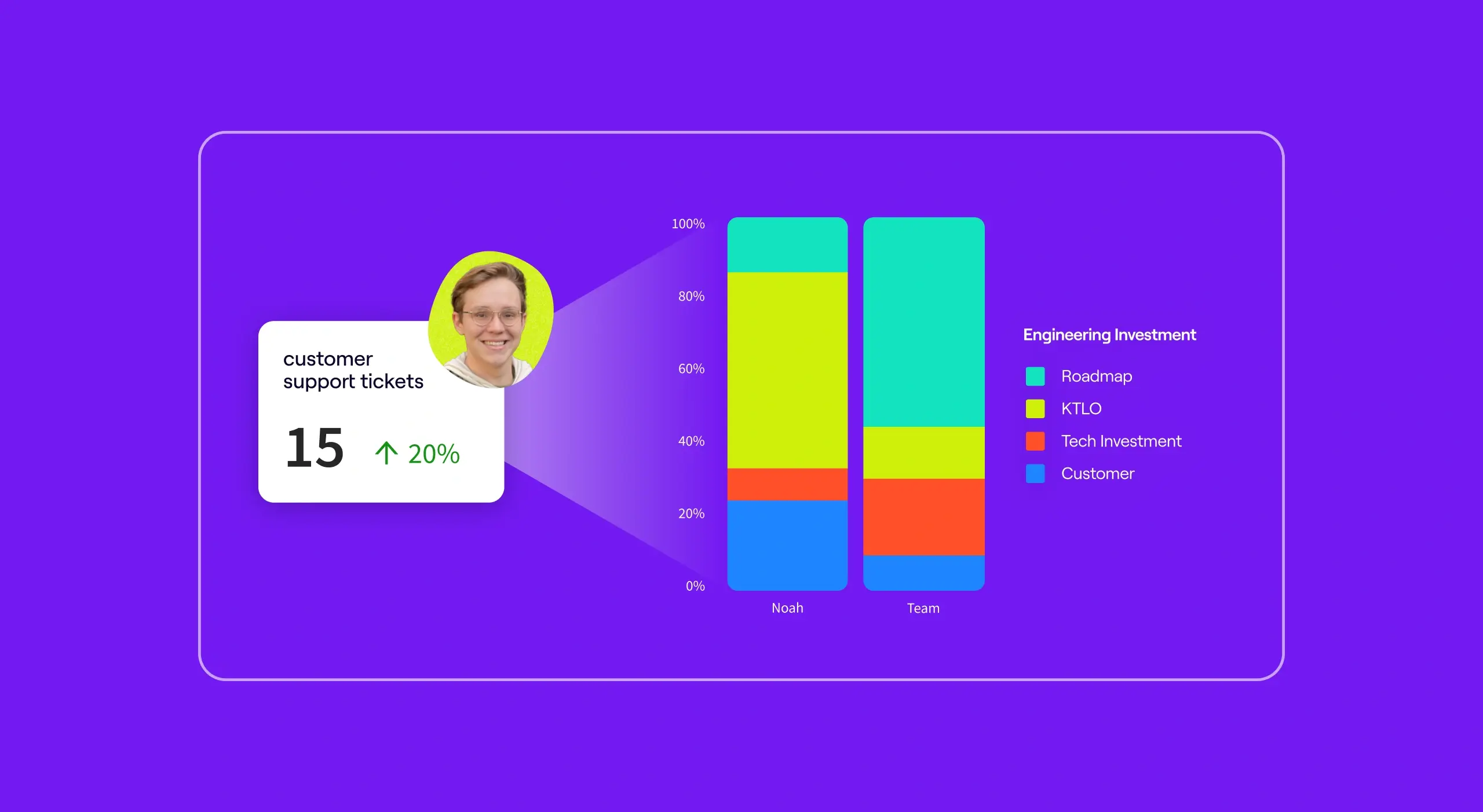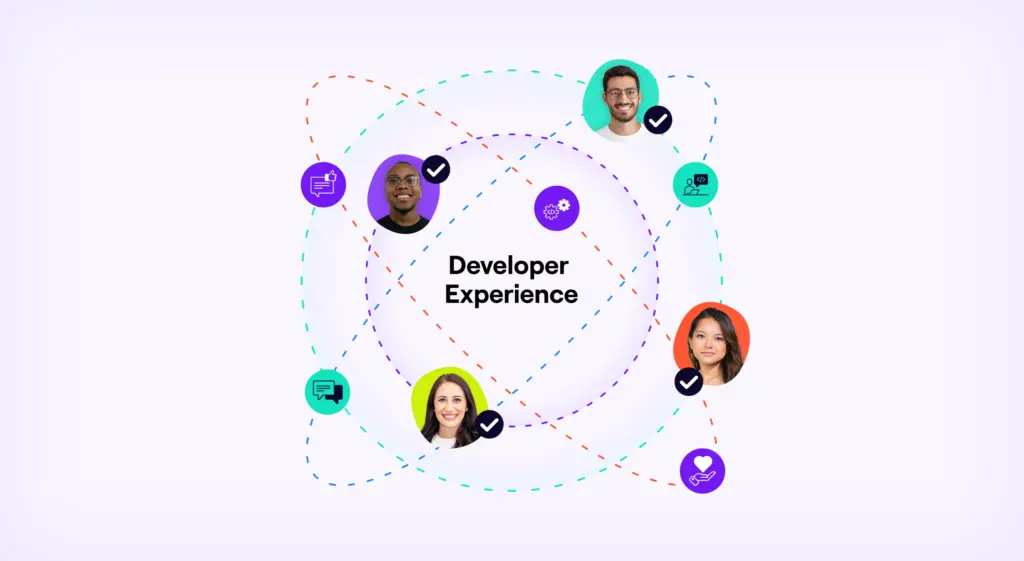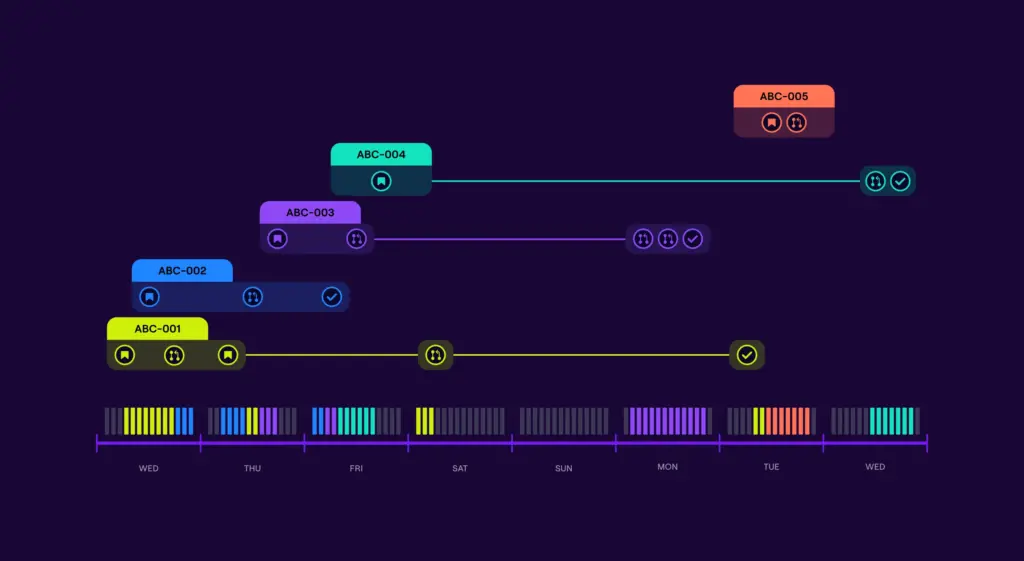Understanding the perspective and challenges of our engineering teams has never been more important than it is today. After recent layoffs across tech, burnout is on the rise. GenAI has the entire software engineering industry wondering how this will impact their jobs. “Efficiency,” “productivity,” and other measures of operational and delivery excellence will suffer if leaders don’t understand and respond to their team’s needs. Your team’s health could suffer if engineers aren’t empowered to quantify the impact of their contributions and development.
In this post, we introduce the story of a software developer at Jellyfish, Noah Flowers, who used Jellyfish data to better understand his work’s impact in the context of his team. Using the insights within Jellyfish, he was able to flag with his manager specific changes that were required to their team’s documentation process that will positively impact his team in the future. We believe that as we all mature in using Software Engineering Intelligence, Noah’s use case for Jellyfish will become very common.
Let’s discuss how Jellyfish validated our developer’s assumptions and empower him to have conversations that improve how his team functions.
Most people who have had roommates can relate to the following scenario: you walk into the kitchen to put a dish into the dishwasher, only to find that it hasn’t been emptied. Didn’t I empty it last time, you think to yourself. Haven’t I emptied the dishwasher every time? And when you confront your roommate about it, you discover they feel exactly the same way! As it turns out, you’ve both been emptying the dishwasher for months, believing you are the only one doing so.
Similarly, there are many developers who feel they are the ones constantly stuck with the bugs and thorny issues. We want to work on growth and roadmap tickets, but everytime you look at what needs to get done, there’s another bug or highest priority ticket that needs to be picked up first. We take the bug and work to resolve it, all while seeing interesting roadmap tickets getting picked up and closed!
After one particular month where I handled non-roadmap ticket after non-roadmap ticket, I had that familiar feeling of finding an unemptied dishwasher. However, I’ve learned that those ‘conversations with your roommates’ don’t address the underlying situation when everyone has been unloading the dishwasher. I didn’t want to complain to my team about my feelings, especially since I knew everyone was shouldering the burden, so I found myself curious about whether or not it was grounded in reality. Fortunately, I realized I could look into the data!
How Allocations Validated Our Assumptions
Jellyfish splits both my own and my team’s work allocation by different categories, so I was able to really quickly dig into what we were focused on during that particular month. After a short period of time, I was able to identify exactly what was happening. I clicked into our KTLO and Customer work for that month and found that I spent the majority of my time that month working on non-roadmap tickets. Although it was less time than I had been feeling, I had spent the most time on my team looking at this kind of work.
I had already intended on bringing my feelings up with my manager in our next 1:1, but now I had some data as well. I hoped the data would allow the conversation to evolve from how I was feeling to finding productive solutions for the situation.
Bringing Allocation Data to My Manager During Our 1:1
After I had laid everything out on the table, my manager posed a question that at first seemed like a tangent: What had I learned in all of these tickets? We walked through a couple, and I explained the tricks I had used to solve them quickly or lessons I learned from digging into an open-ended question. Once I had gotten through a few, she remarked that these learnings and takeaways seemed like a useful output from this work, and suggested that I write them down in a shared team document called “The Trophy Room”, where we could collect stories and learnings from our wins and struggles. In the process of tackling these tough issues, I could also feel like I was helping the team as a whole learn and become more adept at tackling these problems.
Our revised approach to KTLO work
As a result, I’ve started writing quick blurbs about the weightier tickets I work on, with tips, “gotchas,” and other helpful information. These quick blurbs have already helped me, and they’re also going to be useful to my team as they make it easier for anyone to work on the trickier tickets. I’ve found patterns and processes in these writeups, and have been able to remember and learn from these tickets in new ways. It has really helped shift my mindset from seeing these tickets as distractors from the long-term goals of our team to seeing them as a critical place for learning and important for our continuing success. The completed tickets weren’t the only output from the work – my learning, especially when shared with my team, was equally important.
Thanks to Jellyfish, I was able to find my feelings in the data, and have a productive conversation with my manager that led to a more positive outlook and a new way to lower the barrier to succeed with these tickets! Now all I need is for Jellyfish to track chores around the apartment!







